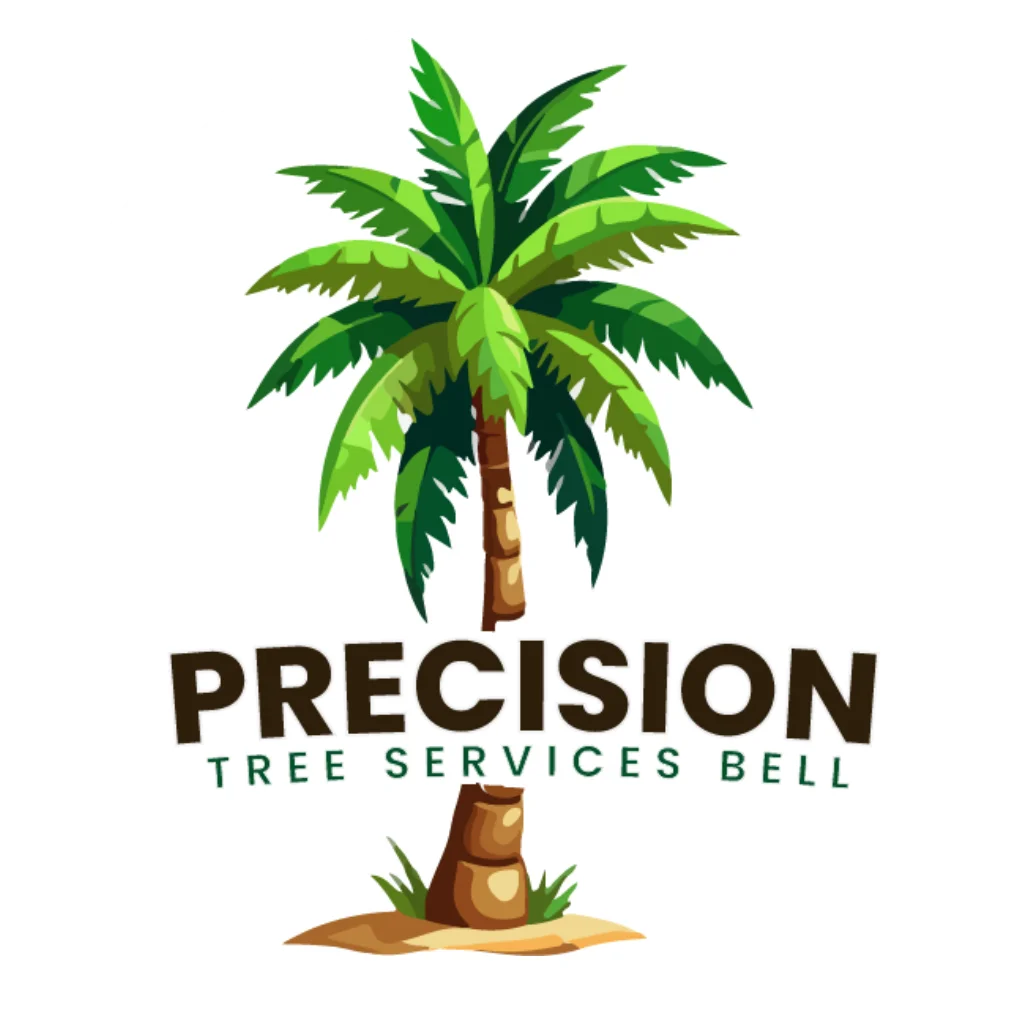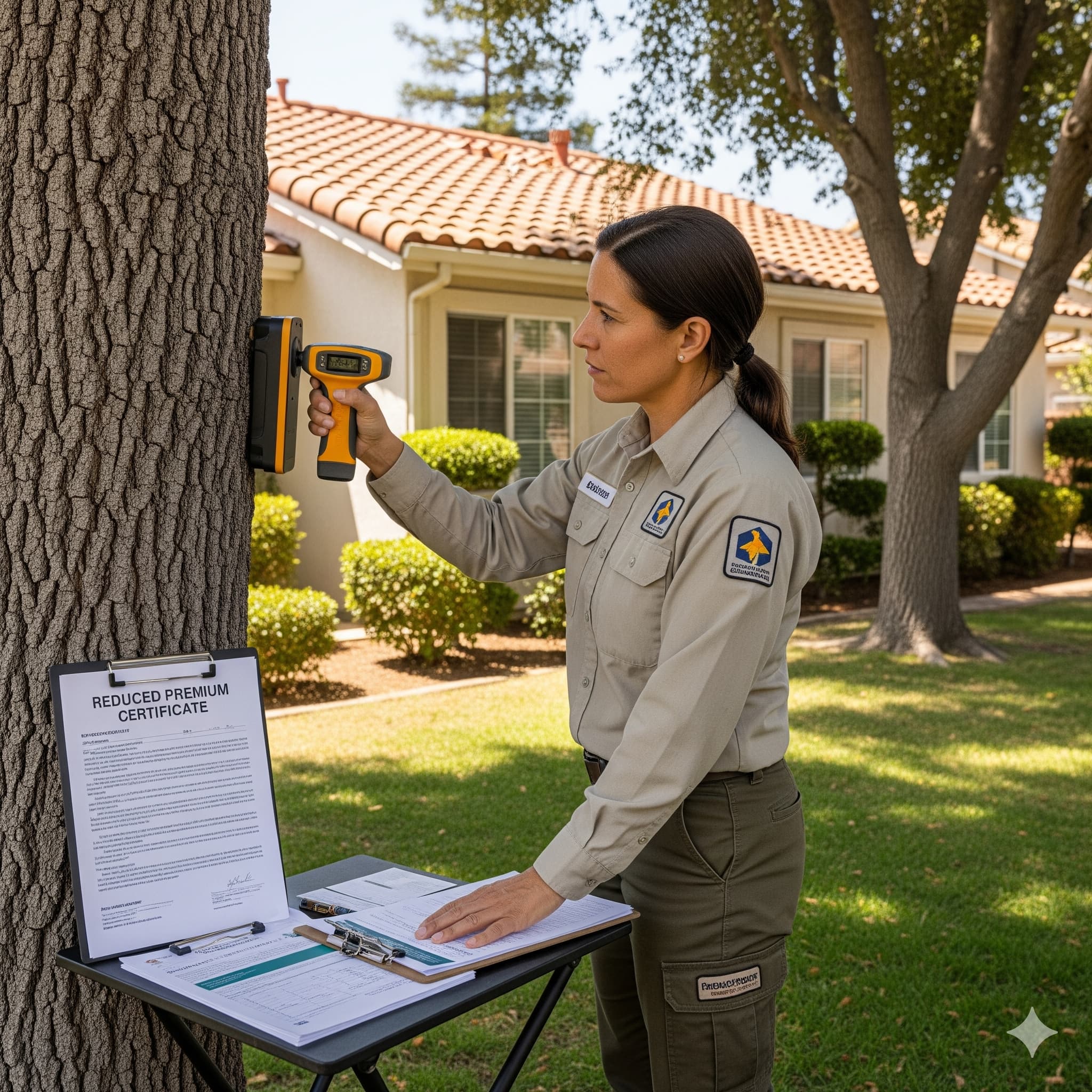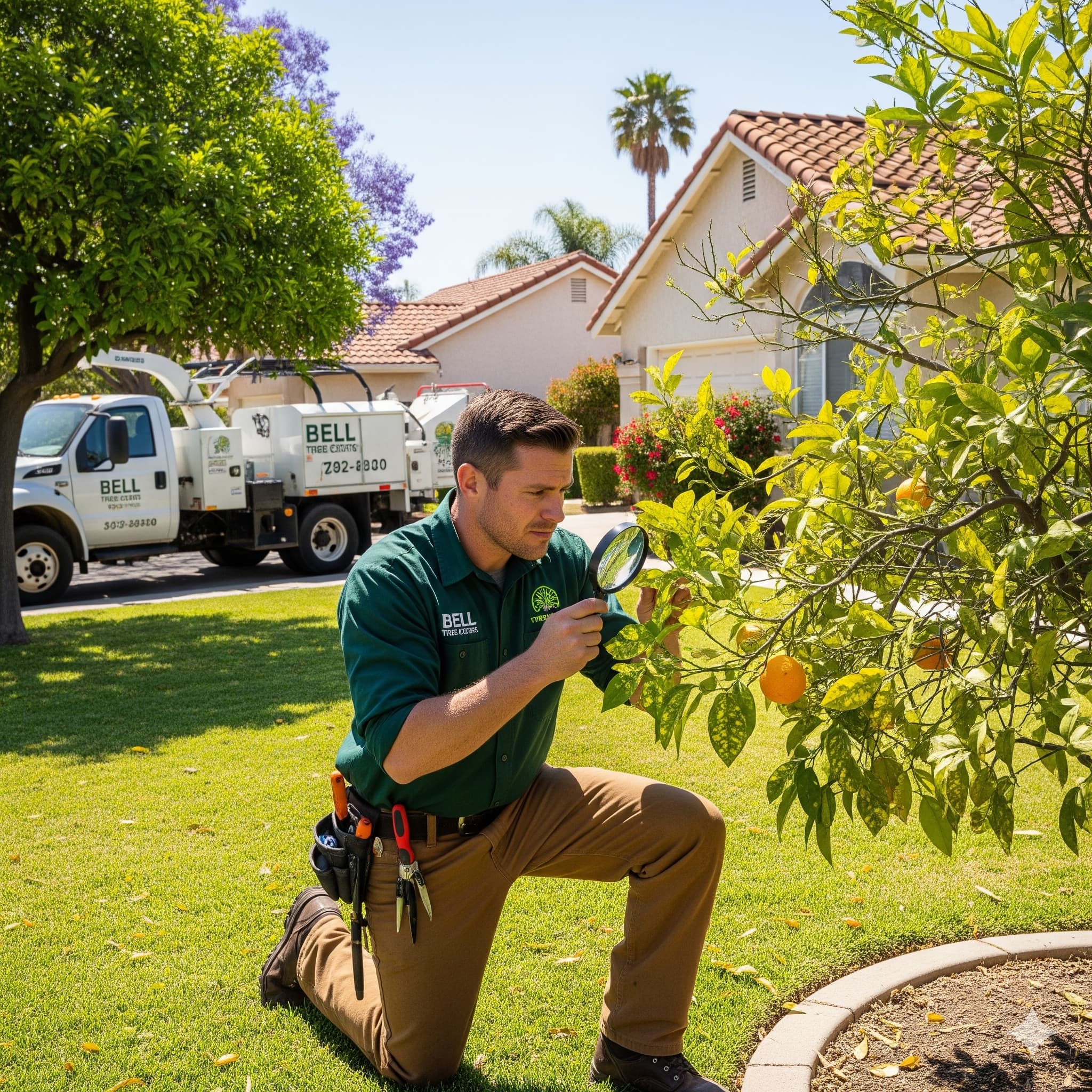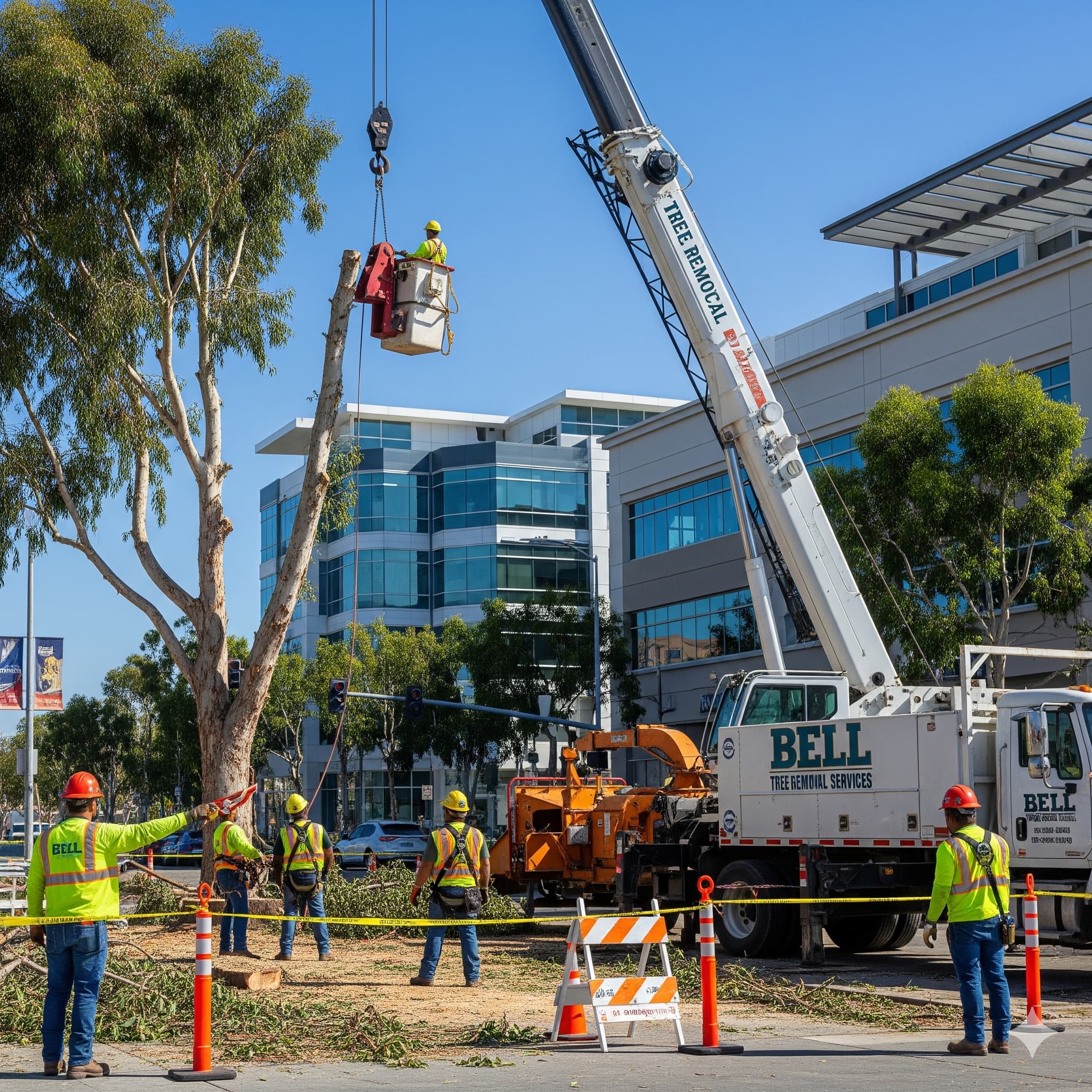
Guide to Safe Stump Removal Near Utility Lines in Bell
Stump removal near utility lines presents unique challenges that require careful planning, professional expertise, and strict adherence to safety protocols. For Bell, California residents, understanding these safety requirements is essential for protecting both personal safety and critical infrastructure. This comprehensive guide provides essential information for safely managing stump grinding projects when underground utilities are present.
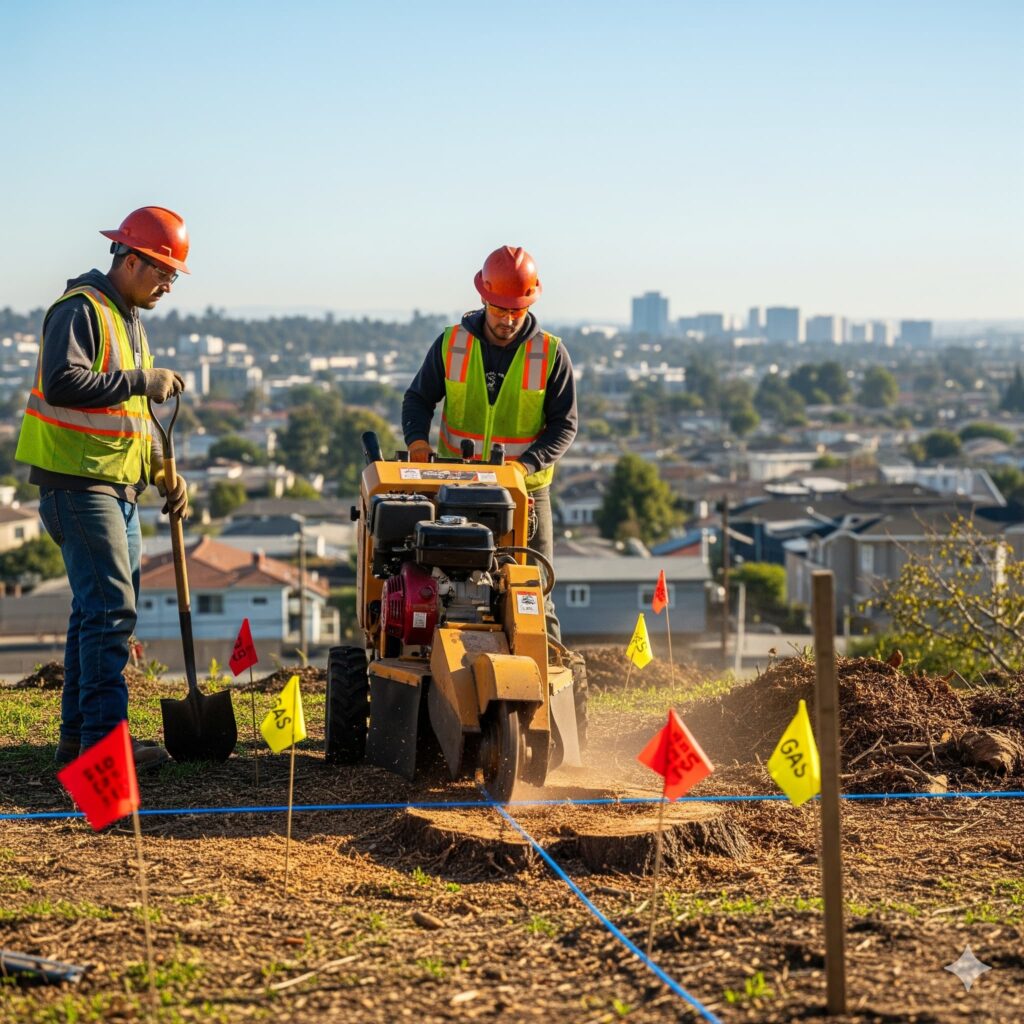
Understanding the 811 System in California
Before any stump grinding project begins in Bell, California, the law requires contacting DigAlert (Underground Service Alert of Southern California) by dialing 811. This free service, established in 1976 following a tragic utility accident, serves nine Southern California counties, including Los Angeles County, where Bell is located.
DigAlert connects property owners and contractors with utility companies to mark underground lines before any excavation begins. The service operates 24 hours a day, seven days a week, providing essential safety coordination between residents, contractors, and utility providers.
When you contact 811, provide complete information, including the property owner’s name, the exact address of the work location, project description, and contact information. Allow at least two working days before beginning any work, not including the date you submit the request.
Legal Requirements and Responsibilities
California Government Code Section 4216 establishes strict requirements for excavation projects. All excavators must contact the appropriate regional notification center before beginning work that disturbs the ground. Violations can result in significant fines and legal liability for utility damage.
Property owners and contractors share responsibility for preventing utility damage. Even if utility lines are properly marked, excavators must exercise care when working near marked utilities and use hand tools within the tolerance zone, typically 24 inches on either side of marked lines.
Bell residents should also verify local permit requirements with the City’s Community Development Department. While stump grinding typically doesn’t require building permits, work near certain protected trees or in sensitive areas may need additional approvals.
Common Utility Types and Depth Requirements
Understanding typical utility depths helps assess potential conflicts with stump grinding operations. However, actual depths can vary significantly based on installation date, soil conditions, and subsequent grading activities.
Natural gas lines typically require minimum depths of 12 inches for service lines and 18 inches for distribution lines, though local codes may require greater depths. Gas lines in Bell often use plastic piping that can be easily damaged by stump grinding equipment.
Electrical service lines generally require minimum depths of 18 inches for residential services and up to 36 inches for higher voltage distribution lines. However, secondary services and low-voltage lighting circuits may be buried much shallower.
Water and sewer lines vary considerably in depth based on the specific service and installation requirements. Main distribution lines typically run deeper than individual service connections, which may be as shallow as 12 inches below grade.
Telecommunications and cable television lines often represent the shallowest utilities, sometimes buried only 2-4 inches below the surface. These shallow installations create frequent conflicts with stump grinding operations.
Stump Grinding Depth Considerations
Professional stump grinding typically removes stumps to depths of 6-12 inches below ground level, depending on the equipment used and specific project requirements. However, large stumps may require grinding to greater depths to completely eliminate visible remnants and prevent regrowth.
The grinding depth decision becomes critical when utilities are present. Standard practice involves grinding only to depths that maintain safe clearance from marked utility lines. Most professional services will grind to within 6 inches of marked utilities to maintain adequate safety margins.
Understanding that utility marking accuracy can vary helps explain conservative depth approaches. Utility locating services use electromagnetic detection equipment that provides approximate locations, but exact positions may vary by several inches from marked locations.
Risk Assessment and Safety Protocols
Professional assessment becomes essential when utilities are present near stump locations. Qualified arborists and stump grinding services understand how to evaluate risk levels and determine appropriate safety measures for each specific situation.
Ground Penetrating Radar (GPR) technology provides enhanced utility detection capabilities beyond standard electromagnetic locating methods. GPR can identify non-metallic utilities, determine more precise depths, and detect other buried obstacles that might affect grinding operations.
Hand excavation near marked utilities allows visual confirmation of utility locations and depths before mechanical grinding begins. This additional verification step helps prevent accidents while providing accurate information for safe grinding depth determination.
Emergency response planning becomes critical when working near utilities. Professional services maintain emergency contact information for local utility companies and understand appropriate responses to utility strikes should they occur.
Professional vs. DIY Safety Considerations
Working near utility lines elevates stump removal from a typical homeowner project to one requiring professional expertise. The potential consequences of utility strikes, including gas leaks, electrical shock, service disruptions, and expensive repairs, make professional services essential for safety.
Professional stump grinding services carry specialized insurance coverage, including liability protection for utility damage. This coverage protects both the service provider and property owner from potentially significant financial exposure resulting from utility accidents.
Training requirements for professional operators include understanding utility safety protocols, proper equipment operation, and emergency response procedures. This specialized knowledge proves invaluable when working in complex utility environments.
Equipment considerations also favor professional services when utilities are present. Commercial-grade stump grinders offer better control and precision than rental equipment, allowing safer operation near sensitive infrastructure.
Bell-Specific Infrastructure Challenges
Bell’s urban density creates unique challenges for stump grinding projects. Properties typically feature limited access, nearby structures, and concentrated utility installations that require careful navigation during grinding operations.
The city’s age means utility installations span several decades with varying construction standards and depths. Older installations may not meet current depth requirements, creating potential conflicts that newer developments might avoid.
Los Angeles River’s proximity affects some Bell properties, particularly those in areas where flood control infrastructure creates additional underground complexity. Storm drainage systems and flood control utilities may not be marked through standard 811 services.
Street tree maintenance in Bell often requires coordination with multiple utility providers due to the concentration of overhead and underground infrastructure along city streets. This complexity extends to private property trees that may conflict with utility easements or rights-of-way.
Utility-Specific Safety Procedures
Natural gas safety requires immediate recognition and response to gas odors during stump grinding operations. Any suspected gas leak requires immediate work stoppage, area evacuation, and notification of the gas company emergency line.
Electrical safety protocols include understanding that electrical contact can occur through ground contact as well as direct wire contact. Wet conditions increase electrical hazard risks, making weather considerations important for scheduling grinding work near electrical utilities.
Water line precautions focus on preventing contamination of potable water systems and managing flooding risks if water mains are accidentally damaged. Understanding shut-off valve locations helps minimize damage if water line strikes occur.
Telecommunications line safety primarily concerns service disruption prevention, though fiber optic lines can present eye safety hazards if damaged during grinding operations.
Emergency Response Procedures
Utility strike response requires immediate action to ensure safety and minimize damage. Priority involves ensuring worker and public safety through immediate work stoppage and area isolation if necessary.
Gas line strikes require immediate area evacuation, elimination of ignition sources, and emergency notification to both the gas company and the local fire department. Never attempt to repair gas line damage or stop leaks without proper training and equipment.
Electrical line strikes demand immediate equipment shutdown and area isolation to prevent shock hazards. Assume all electrical lines are energized until confirmed otherwise by utility company personnel.
Water line strikes require quick action to prevent property damage and water waste. Locate and operate curb stop valves if accessible, then notify the water utility for proper repairs.
Documentation and Liability Protection
Proper documentation protects all parties when stump grinding occurs near utilities. Photographic documentation of utility markings, pre-work conditions, and completed work provides valuable records if questions arise later.
Written agreements between property owners and contractors should clearly address utility-related risks, responsibilities, and procedures. These agreements help establish liability allocation and ensure all parties understand their obligations.
Insurance verification ensures adequate coverage for potential utility damage. Both property owners and contractors should confirm their insurance policies provide appropriate protection for utility-related incidents.
Permit documentation, where required, creates official records of approved work and compliance with local regulations. This documentation proves valuable if regulatory questions arise later.
Technology Solutions for Enhanced Safety
Modern technology provides enhanced safety tools for stump grinding near utilities. GPS-based utility mapping systems offer improved accuracy over traditional marking methods, though they require specialized equipment and training.
Electronic marking devices allow utilities to provide more precise location information and can help track marking accuracy over time. These systems particularly benefit repeat customers or ongoing maintenance projects.
Digital documentation systems enable real-time recording and sharing of utility information, safety procedures, and work progress. This technology improves communication between contractors, property owners, and utility companies.
Remote monitoring capabilities allow supervisors to maintain oversight of utility-sensitive work even when not physically present on site. This oversight helps ensure safety protocols are followed consistently.
Cost Considerations and Budget Planning
Stump grinding costs increase when utilities are present due to additional safety requirements, specialized procedures, and extended work time. Property owners should expect higher costs for utility-sensitive projects compared to standard stump removal.
Utility locating services through 811 are provided free of charge, but enhanced locating services such as GPR scanning typically involve additional costs. These advanced services may prove worthwhile for complex utility environments.
Insurance implications may affect project costs, as some contractors charge higher rates for utility-sensitive work to account for increased liability risks. However, this cost typically proves minimal compared to potential utility damage expenses.
Emergency response preparation may require additional resources such as standby personnel or specialized equipment. These precautionary measures represent sound investments in project safety and success.
Seasonal and Weather Considerations
Weather conditions affect utility safety during stump grinding operations. Wet conditions increase electrical hazards and make utility marking more difficult to see and follow accurately.
Seasonal utility demand patterns may affect response times for utility emergencies. Summer peak electrical demand or winter heating season gas usage can influence utility company emergency response capabilities.
Ground conditions vary seasonally and affect both utility detection accuracy and grinding operations safety. Frozen ground may alter utility detection results, while saturated soils can create unstable working conditions.
Scheduling considerations should account for utility company availability and response times during peak service periods. Planning projects during utilities’ less busy seasons can improve coordination and emergency response capabilities.
Coordination with Local Authorities
Bell’s emergency services should be notified of significant stump grinding projects near utilities, particularly those involving large stumps or complex utility configurations. This notification helps ensure an appropriate emergency response if incidents occur.
Traffic management may become necessary for stump grinding projects near street utilities or in locations that affect pedestrian access. Coordination with Bell’s public works department ensures appropriate safety measures.
Environmental considerations apply to projects near storm drainage systems or in areas that might affect water quality. Bell’s environmental compliance requirements may apply to certain utility-sensitive locations.
Building department consultation helps verify permit requirements and ensures compliance with local regulations. Some utility-sensitive projects may require additional approvals or inspections.
Long-term Maintenance and Follow-up
Post-grinding monitoring helps identify any delayed utility issues that might develop after stump removal completion. Settlement or shifting of backfill materials can occasionally affect nearby utilities.
Root system decomposition following stump grinding may continue for several years, potentially affecting nearby utilities through soil movement or changes in drainage patterns. Monitoring helps identify these issues early.
Landscape restoration should account for utility locations when planning new plantings or hardscape installations. Avoiding future conflicts requires understanding utility locations and maintenance access requirements.
Maintenance access preservation ensures utility companies can reach infrastructure for routine maintenance or emergency repairs. Stump grinding projects should maintain or improve utility access rather than creating new obstacles.
Conclusion: Prioritizing Safety in Bell’s Urban Environment
Safe stump removal near utility lines requires professional expertise, careful planning, and strict adherence to safety protocols. Bell residents benefit from working with experienced contractors who understand local utility configurations and safety requirements.
The complexity of Bell’s urban utility infrastructure makes professional services essential for projects involving utility conflicts. The potential consequences of utility damage far exceed the cost of professional stump grinding services, making this investment in safety and peace of mind worthwhile.
Contact Precision Tree Services Bell for expert assessment and safe stump grinding near utility lines. Our certified professionals understand Bell’s unique utility challenges and maintain all necessary insurance and safety certifications to protect your property and ensure regulatory compliance.
